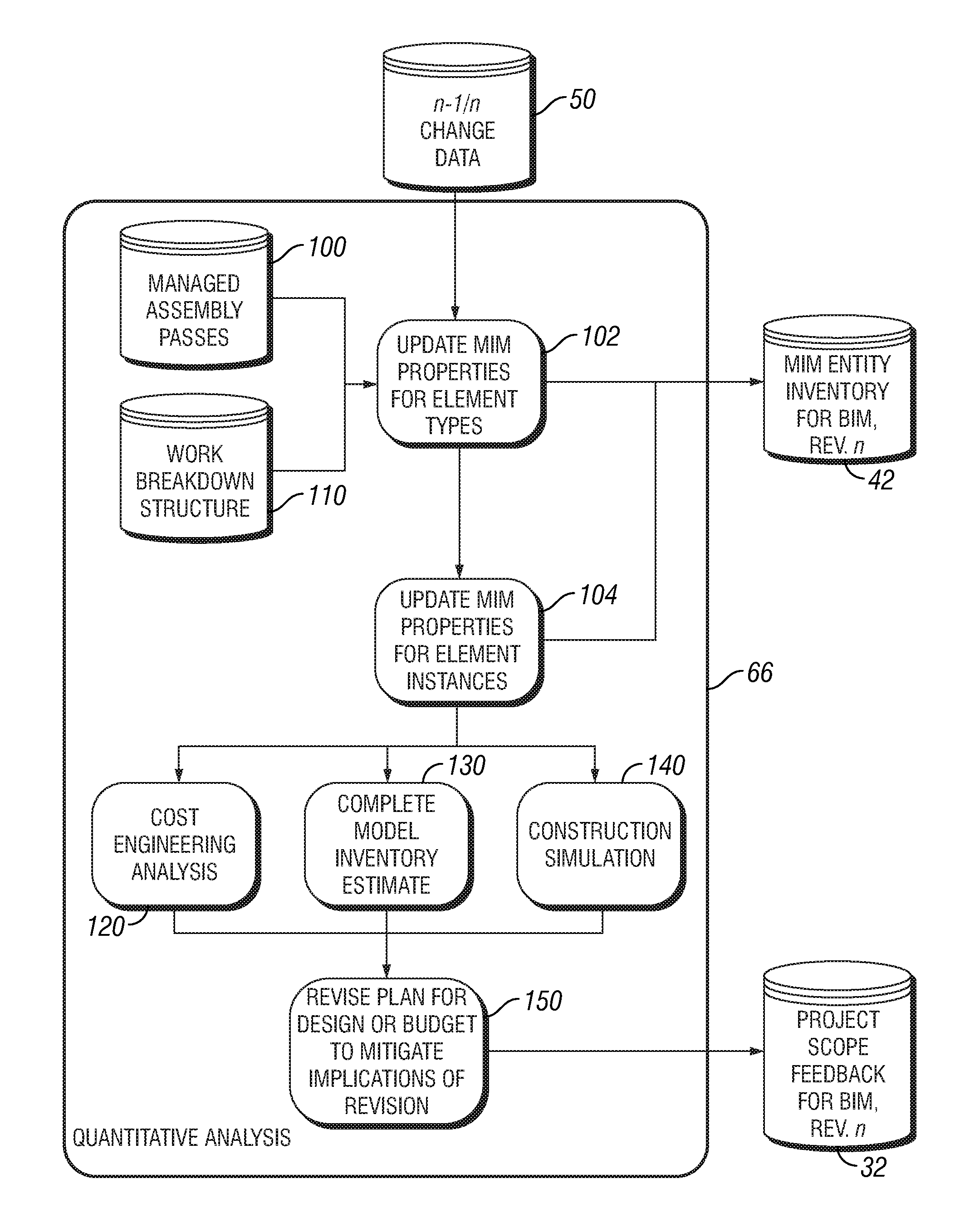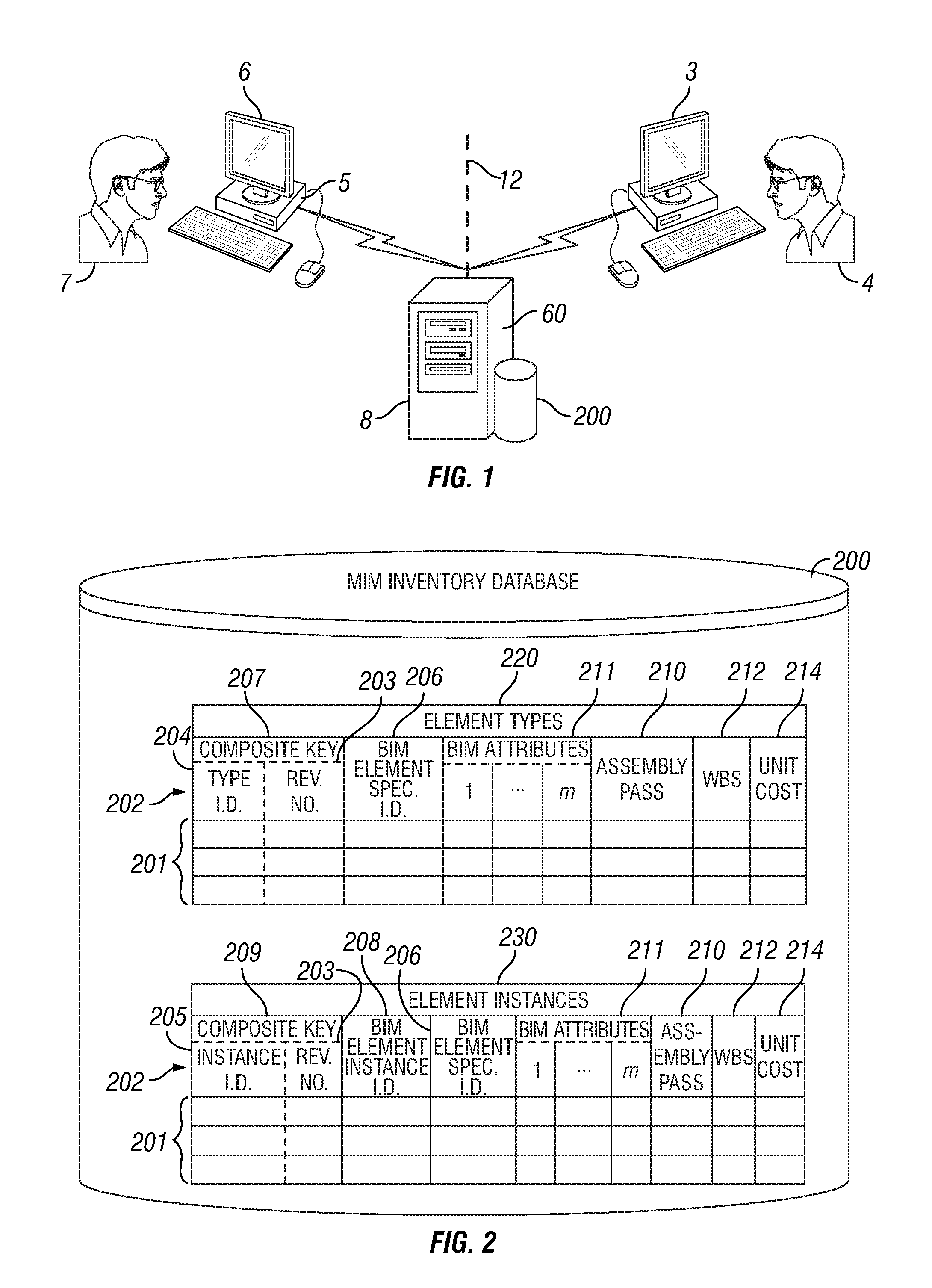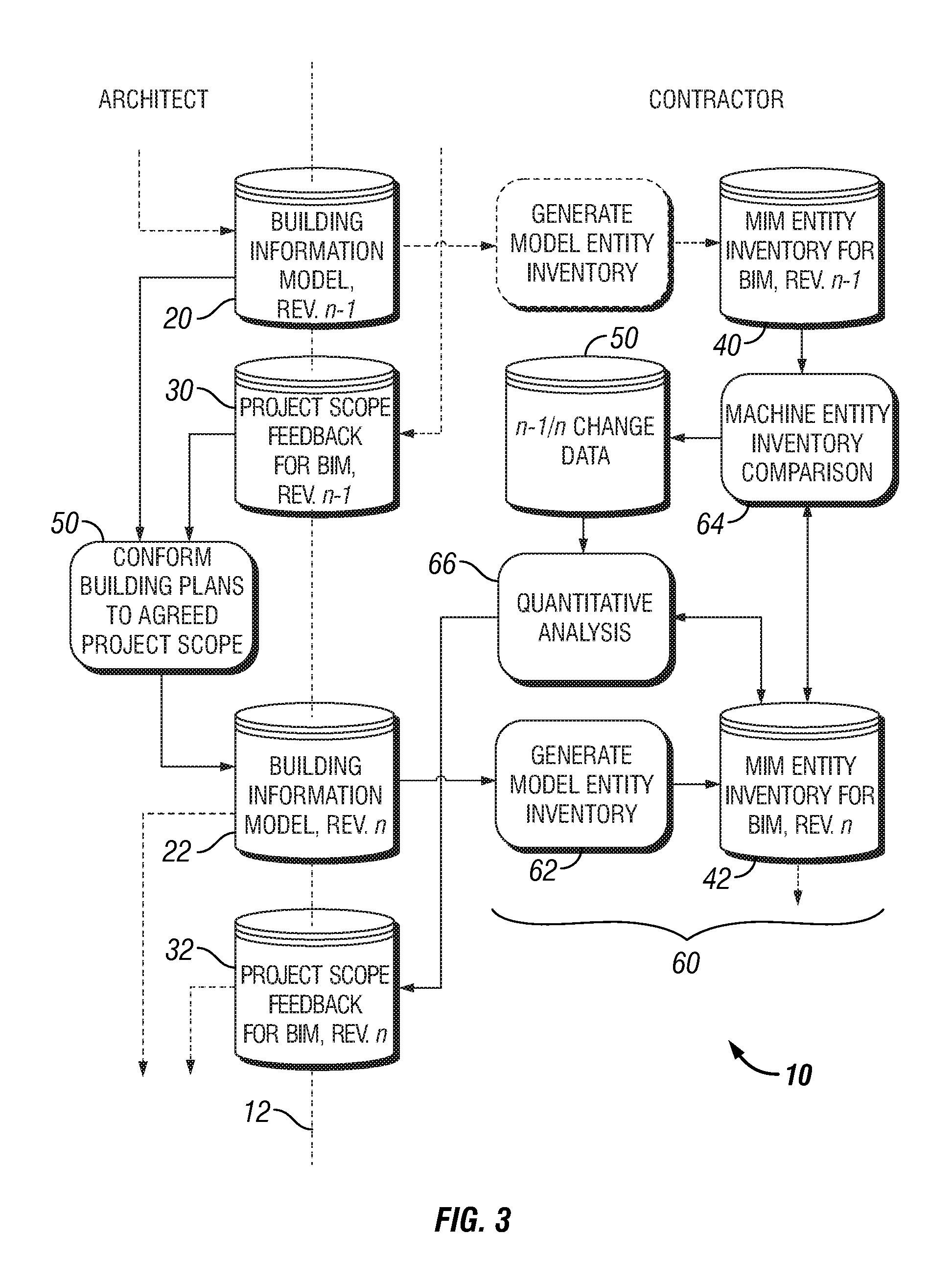Model inventory manager
a model inventory and inventory manager technology, applied in the field of building information modeling, can solve the problems of small opportunity for the contractor to add value, low and fluctuations in the estimated cost of the structure, so as to achieve rapid understanding of the implications of any design chang
- Summary
- Abstract
- Description
- Claims
- Application Information
AI Technical Summary
Benefits of technology
Problems solved by technology
Method used
Image
Examples
Embodiment Construction
FIG. 1 illustrates a Model inventory management (“MIM”) system 60 according to a preferred embodiment of the invention. MIM system 60 ideally resides on a central server computer 8 that includes a database 200. MIM system 60 is in communication with a computer 3 that is operable by a contractor 4 or the like. MIM system 60 is also in communication with a building information modeling (“BIM”) system 5 for receiving therefrom computerized building plans and modeling files and for providing thereto feedback and updates. BIM system 5 typically resides on a computer 6 that is operable by an architect 7 or the like, but it may also reside on central server computer 8, if desired. Communications between MIM system 60 and other devices or systems may occur by routine pushing or pulling of data, as appropriate. Computers 3, 6, and server 8 are well known in the art. For this reason, they are not discussed in detail herein.
According to the preferred embodiment of the invention, the contractor...
PUM
 Login to View More
Login to View More Abstract
Description
Claims
Application Information
 Login to View More
Login to View More - R&D
- Intellectual Property
- Life Sciences
- Materials
- Tech Scout
- Unparalleled Data Quality
- Higher Quality Content
- 60% Fewer Hallucinations
Browse by: Latest US Patents, China's latest patents, Technical Efficacy Thesaurus, Application Domain, Technology Topic, Popular Technical Reports.
© 2025 PatSnap. All rights reserved.Legal|Privacy policy|Modern Slavery Act Transparency Statement|Sitemap|About US| Contact US: help@patsnap.com



